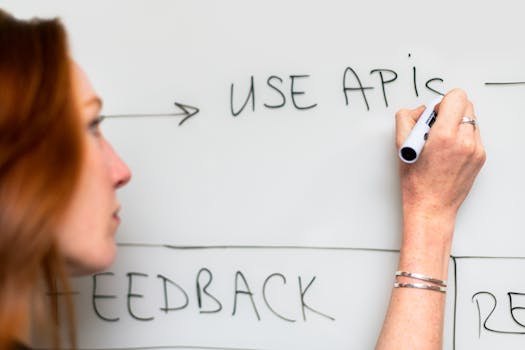Anúncios
Creating tech materials is an essential skill for professionals in various fields, from education to corporate settings. By developing effective tech materials, you help in conveying complex information clearly and engagingly.
Whether you aim to create user manuals, training guides, or educational content, understanding the components necessary for high-quality tech materials is crucial. This guide will walk you through the steps needed to create these resources successfully.
In this article, we will unfold the process of creating tech materials, diving into content planning, design principles, multimedia elements, and editing processes. Let’s explore how to enhance your tech communication.
Understanding Your Audience
The first and most critical step in creating effective tech materials is identifying your target audience. Knowing who your audience is informs the tone and complexity of your materials.
Analyze the demographics, skill levels, and specific needs of your audience. This understanding helps tailor content that resonates with them, leading to better engagement and comprehension.
Anúncios
Additionally, consider conducting surveys or interviews to gain insights into the preferences of your audience. This feedback can guide your content decisions, ensuring relevance and impact.
Furthermore, anticipate common pain points your audience may experience. Addressing these issues allows you to create more valuable resources that enhance the learning experience.
Ultimately, understand your audience’s expectations to bridge the gap between their needs and your content. This foundational step lays the groundwork for effective communication.
Anúncios
Planning Your Content
Once you’ve identified your audience, it’s time to plan your content meticulously. Craft a structured outline that highlights the key topics and sub-topics you wish to cover.
Ensure that the content flow is logical and easy to follow. A well-organized format helps readers navigate the information seamlessly, boosting retention and understanding.
Additionally, define the primary goals of your tech materials. Are you aiming to educate, inform, or persuade? Clarity in your objectives shapes your narrative and enhances effectiveness.
Consider using storyboarding techniques to visualize the flow of information. This can help in identifying any gaps or redundancies within the content.
Finally, allow room for flexibility in your plan. Being adaptable to changes ensures that your content remains relevant and up-to-date with evolving technology trends.
Design Principles for Tech Materials
Good design plays an essential role in the effectiveness of tech materials. Aesthetics should not overshadow usability; hence, balance both aspects for optimal engagement.
Choose a clean layout with ample white space to reduce visual clutter. Visual appeal enhances readability and allows users to focus on the content without distractions.
Select colors and fonts that align with your brand identity while maintaining readability. Consistent branding ensures familiarity and enhances credibility among users.
Incorporate headings and bullet points strategically to break down chunks of information. This technique aids in scanning and allows readers to absorb information quickly.
Lastly, consider accessibility features. Ensure that your materials are usable by everyone, including individuals with disabilities, by adhering to web content accessibility guidelines.
Integrating Multimedia Elements
Multimedia elements significantly enhance the engagement levels of tech materials. Incorporating images, videos, and infographics can break the monotony of text-based content.
Visual content can simplify complex information and make it more digestible. Infographics, for example, are great for summarizing data or illustrating processes efficiently.
Videos are particularly effective in demonstrating functions or processes. They add a dynamic element that static text cannot replicate, capturing attention more effectively.
However, ensure that multimedia components align with the content’s goals. Irrelevant visuals can distract readers and dilute the overall message you aim to convey.
Finally, optimize multimedia for web performance. Compressed files facilitate faster loading times, enhancing user experience and preventing frustration.
Writing Clear and Concise Content
The writing style greatly influences the effectiveness of tech materials. Strive for clarity and brevity, avoiding jargon unless necessary for the audience’s understanding.
Utilize short sentences and simple vocabulary to make the text accessible. Readers should grasp the concepts without feeling overwhelmed or confused.
In addition, use the active voice to create direct and powerful statements. This style fosters engagement and encourages readers to connect with the content.
Consider the importance of structured formatting. Use headings, lists, and tables to present information clearly, allowing readers to extract key points swiftly.
Finally, incorporate a consistent tone that resonates with your audience. Whether professional, conversational, or technical, maintain the same voice throughout your materials.
Editing and Feedback
Editing is a crucial phase in creating tech materials. Mistakes in grammar or clarity can undermine your credibility, so ensure thorough proofreading before publication.
Consider utilizing editing tools or software to catch errors that may go unnoticed. Tools like spell checkers and grammar checkers can streamline this process significantly.
In addition, seeking feedback from peers or subject matter experts can provide fresh perspectives. Constructive criticism can help identify areas needing improvement or clarification.
Be open to making revisions based on the feedback received. This process enhances the quality of your materials and demonstrates your commitment to excellence.
Lastly, establish a quality control process to maintain the standards of your tech materials. Regularly updating content also ensures relevance in an ever-evolving technological landscape.
Delivering Your Tech Materials
With everything prepared, the next step is effectively delivering your tech materials. Determine the most suitable format for your audience—online, printed, or hybrid.
For digital formats, ensure your website is user-friendly and accessible. A well-designed platform enhances the user experience and invites more engagement.
If opting for printed materials, prioritize high-quality printing and durable materials. The physical presentation reflects professionalism and reinforces trust in your content.
Incorporate appropriate channels for distribution. Use email, social media, or internal company networks to reach your audience, choosing methods aligned with their preferences.
Lastly, consider analytics tools to monitor engagement metrics. This data can inform future improvements and help in measuring the success of your tech materials.
Conclusion
Creating effective tech materials is a comprehensive process that starts with understanding your audience. Through careful planning, design, and writing, you can produce resources that provide value.
Incorporating multimedia enhances engagement, while editing assures quality. Finally, delivering your content effectively ensures it reaches your intended audience and meets their needs.
Embrace the steps outlined in this guide, and you will develop tech materials that inform, engage, and empower your audience effectively.



